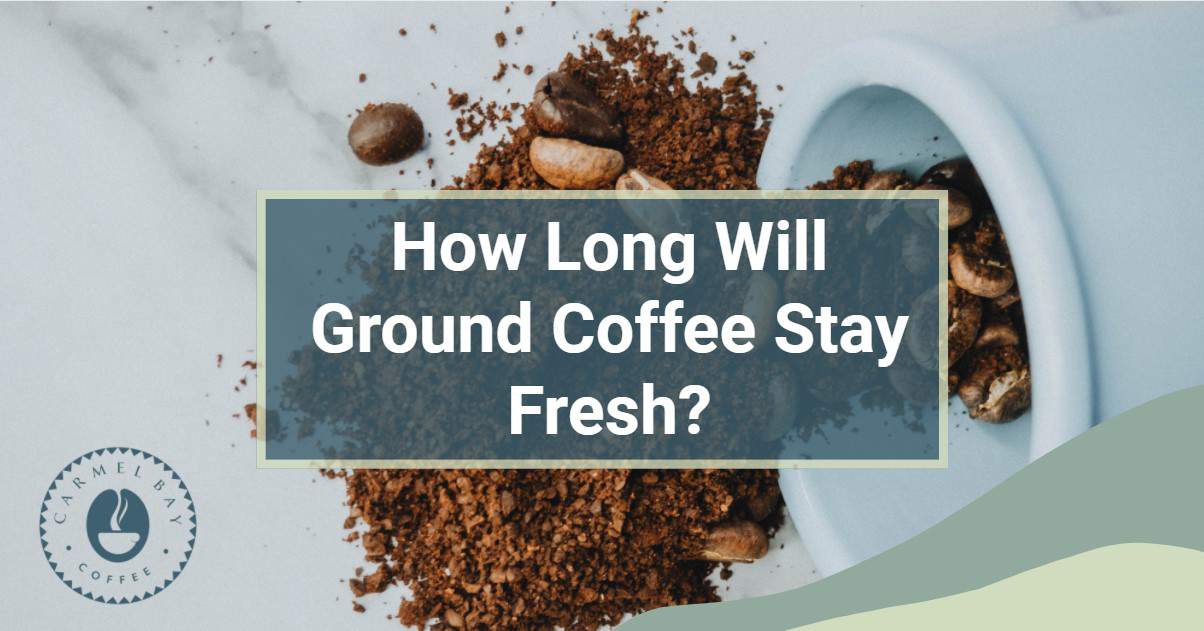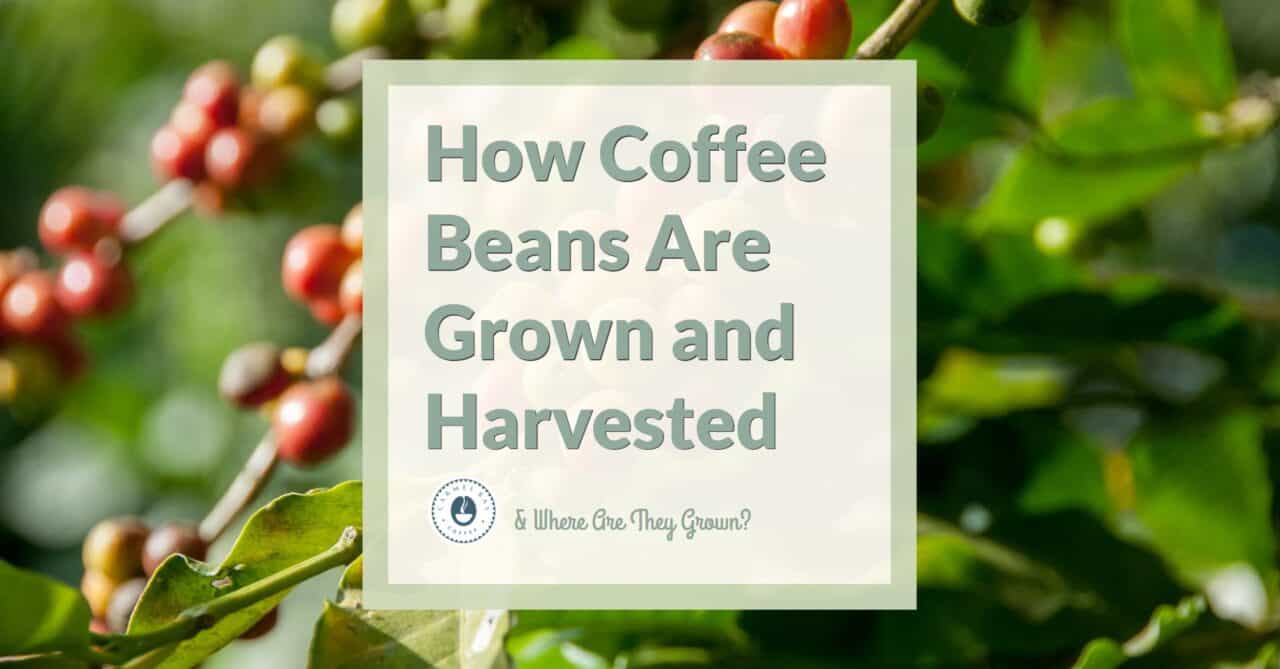There’s nothing quite as disappointing as taking a sip of your morning coffee and finding it lacking in flavor or even tasting downright bad.
While there are many factors that can affect the taste of your coffee, in this article, we examine a few common culprits to solve the riddle of why does my coffee taste so bad?
So put on your sleuth hat and brew up some beans as we dive into the mystery of bad-tasting coffee.
Why Does My Coffee Taste Bad?
Quality of Your Coffee Beans
Could the culprit be the beans? Rumors are circulating that low-quality, stale beans may be the reason for the lackluster taste of your coffee. Could it be true?
It’s been reported that pre-ground or shelf-stale beans could be the culprits behind this brewing mystery. But fear not, coffee aficionados! There is a solution to this perplexing problem.
Word on the street is that fresh, high-quality beans can provide the robust, full-bodied flavor that you crave.
So, ditch those questionable beans and visit a reputable coffee shop or roaster to crack this case and awaken your taste buds once and for all.
Are you interested in the best coffee worldwide? Check out our article, Discovering the World’s Highest-Rated Coffee.
Bad Tasting Coffee? Check the Bean Color for a Clue
The plot thickens:
Could the color of the beans hold the key to this mysterious coffee case? Some say that the quality of coffee beans can be determined by their color. Reports claim that unroasted green coffee beans should have a pale, yellowish-beige hue with a subtle green tinge.
However, if you spot any black or dark brown spots on those unroasted beans, it could mean trouble. Rumors suggest that damaged beans could produce an inferior roast and brew.
But wait, there’s more to this brewing mystery! Stay tuned to find out how fresh, high-quality roasted beans should look and put your detective skills to the test.
Coffee Growing Conditions and Purity
Things get even more interesting:
Could the beans’ origin and growing conditions be the missing link in this perplexing bad tasting coffee mystery?
According to sources, a coffee’s taste can vary depending on where and how it’s grown. Reports claim that beans from South and Central America, Africa, or Asia can boast sweet, fruity, chocolatey, or earthy notes, making coffee connoisseurs seek out single-origin beans to experience a region’s distinct flavors.
Hold on, there’s more to come! Altitude is also a crucial factor in coffee growing, with higher altitudes resulting in a richer flavor, stronger aroma, more acidity, and overall better quality.
Some say that Arabica beans, grown at high altitudes, offer a more complex and flavorful taste compared to Robusta beans grown at lower altitudes, which offer a larger crop and more caffeine but with a less desirable taste.
But here’s where it gets murky:
whispers in the coffee community suggest that many mass-market coffees mix both beans to balance the flavor and meet a quota. Even worse, cheaper coffee often uses only Robusta beans, which could result in a burnt and less flavorful taste. Could this be the missing clue in our brewing mystery? Stay tuned and let’s unravel this case together!
Have you ever wondered which coffee roast is the strongest? It’s not as straightforward as you think. Please check it out in our article, Which Coffee Roast Is the Strongest?
Coffee Grind Size & Freshness
The suspense builds:
Could the grind size and freshness of the coffee be the missing piece in this brewing mystery? Sources reveal that besides the quality of the beans, the grind size and freshness can significantly impact the taste of your coffee.
Whispers in the coffee community suggest that coffee grounds that are too fine or too coarse can lead to over-extracted or under-extracted coffee, resulting in a less-than-ideal flavor and strength.
Could this be the final clue we need to crack the case and uncover the truth behind this mysterious brew? Keep your wits about you, coffee sleuths, and let’s see what more we can deduce!
Carmel Bay Coffee Tip: I find putting my Breville Barista Express grind setting to level 4 provides the perfect balance for an espresso shot…not too fine but coarse enough to create a heap of coffee in the portafilter. This gets tamped down into a level puck of coffee making for the perfect extraction.
Additionally, coffee that has been ground too far in advance can become stale, losing its flavor and aroma. To improve the taste of your coffee, try grinding your beans immediately before brewing.
Upon further investigation it was determined that the elusive roast date could hold the key to unlocking the truth behind this perplexing bad tasting brew. As with other food products, coffee has an expiration date, and whispers in the coffee community suggest that similar to a beer company placing a brew date on their product, there are roast dates on coffee.
But here’s where it gets murky: for reasons unknown, not all brewers add this critical information to their packaging. Why would they leave out such a crucial detail?
Is it an oversight or something more sinister? Our coffee sleuths are determined to get to the bottom of this mystery.
One seasoned coffee aficionado claims to steer clear of beans that don’t include the roast date, suggesting that it’s a critical factor in ensuring the purest and most delicious coffee. According to most baristas, the optimal timeframe for consuming coffee beans is within 7-21 days of the roast date.
Will this be the final piece of the puzzle that we need to crack the case and solve the mystery of the bad-tasting coffee? Only time will tell, so keep your senses sharp and stay tuned for the next exciting update in our brewing investigation!
Our article about freshness: How Long Will Ground Coffee Stay Fresh: Not as long as you’d think
Identifying Fresh Roasted Coffee: Tips and Tricks
Detecting true freshness in coffee beans doesn’t have to be a task for only the most seasoned of coffee specialists. Anyone can learn the tricks of the trade, and it’s worth the effort for those who can appreciate the difference between fresh and non-fresh coffee.
Our coffee detectives have uncovered some key tips for detecting fresh roasted coffee beans, and they’re willing to share them with you. Are you ready to solve the mystery of fresh roasted coffee? Here’s what to look for:
- Shiny, Glossy Surface:
Clue 1: Fresh coffee beans will have a shiny, glossy appearance because of the natural oils and aromatic compounds within the beans. As the beans age, these oils and fragrant compounds dry up. Check the extent to which the beans have an enticing glossy appearance.
- Squeeze Test:
Clue 2: Assess the amount of oily residue that the beans leave behind after giving them a quick squeeze. Lighter roasts don’t leave as much residue as darker roasts, so take that into consideration when evaluating the beans.
- Check for a Valve:
Clue 3: Fresh coffee beans emit a fair amount of carbon dioxide, which can cause the bag to explode if there’s no valve to release the gas. Check for a valve in the bag to confirm that the beans are truly fresh.
- Roasting Date:
Final Clue: Check the roasting date on the label instead of the expiration date. The more recent the beans were roasted, the fresher the coffee within. High-quality coffee beans and the best ground coffee on the market will always have a clear roasting date.
Water Quality
As we delve deeper into our mystery of why my coffee tastes so bad, our detectives have uncovered a crucial clue. It turns out that water, which makes up half of the main ingredients in coffee, could be the key to unlocking the perfect cup.
The quality of the water used to make coffee is just as important as the beans themselves. Our coffee experts have discovered that hard water, high in minerals such as calcium and magnesium, can ruin the taste of even the finest roast. But using filtered or bottled water can help reduce the mineral content and improve the overall flavor of your coffee.
But that’s not all. Our detectives have also found that the cleanliness of your water containers is crucial. Over time, minerals can build up, and even the best filters can’t perform at their optimal level. Our experts recommend giving your water container a good rinse every few weeks and a thorough cleaning at least once a month.
The Curious Case of the Bad Tasting Coffee: Coffee Machine Cleaning
When all else fails, don’t just throw out the beans…perhaps it’s time for a deeper investigation.
A dirty coffee maker can leave you with a bitter and stale cup of joe. But fear not, the solution to your problem is simple – a thorough cleaning of your machine.
Over time, coffee machines can accumulate a build-up of mineral deposits, old coffee oils, and other unwanted residues that affect the flavor and quality of the coffee.
Consider keeping some cleaning items in stock, such as this universal descaling solution. Once the machine is properly cleaned and maintained, you can continue your investigation.
Trust me, neglecting this crucial step may leave you with more than just bad coffee. Take charge of your caffeine game and get ready to unveil a clean coffee machine to solve your bad-tasting coffee mystery.
Can you smell that? Please take a look at our article, This Is How Long Coffee Beans Keeps Their Smell!
Brewing Method
As our investigation into the mystery of bad coffee continues, we must explore the various brewing methods and their impact on taste. Each brewing method has its unique characteristics that affect the coffee’s flavor, aroma, and body.
Some coffee enthusiasts swear by the French press, claiming that it results in a richer, bolder flavor profile, while others prefer the clean taste and simplicity of a drip coffee maker.
And then there are those who believe that the AeroPress, pour-over, or espresso machine is the best way to experience the full range of flavors in coffee.
But what if the choice of brewing method is not entirely up to the drinker? What if the brewing method itself is the cause of the bad taste? Could it be that someone has tampered with the coffee maker, intentionally altering the brewing process to ruin the taste of the coffee?
As we continue our investigation, we must keep an open mind and consider all possibilities. Who could have access to the coffee maker, and what motive would they have to ruin the coffee’s taste? Only time and further exploration will reveal the truth.
Coffee Tasting Bad? Check the Ingredients
As the mystery of the bad-tasting coffee deepens, a new suspect emerges:
The additives. While it’s true that a dash of vanilla syrup or a spoonful of sugar can add a pleasant twist to your brew, it’s important to be aware that stale or expired ingredients can ruin the taste.
I tend to start my investigations here before anywhere else. Could that seemingly innocent creamer that’s been lurking in the back of your fridge be the culprit? Or perhaps that cinnamon powder that’s been sitting on your shelf for months?
Investigating the freshness and quality of your additives might just be the key to unlocking the mystery of your lackluster coffee. The point being don’t forget to work backwards – the last ingredients to go into your cup could be the first ones to blame.
Improving Coffee Taste
After following the clues and investigating every aspect of coffee brewing, it was discovered that the culprit behind the bad-tasting coffee was…
Regardless of the answer, be sure to check these culprits above.
The case was closed, and coffee lovers everywhere were reminded of the importance of purchasing high-quality, freshly roasted beans and grinding them immediately before brewing.
Along with using filtered or bottled water to reduce the mineral content, while experimenting with different brewing methods. When all else failed, a good cleaning of their coffee equipment was necessary to ensure the best possible coffee experience.
If your coffee doesn’t taste great, there are several steps you can take to improve it. With a little investigation, effort, and experimentation, you can go from a cup of “eww” to a cup of “ahh” in the morning!
You drink it every day, but do you know how it’s grown? Please take a look at our article, How Coffee Beans Are Grown and Harvested.





